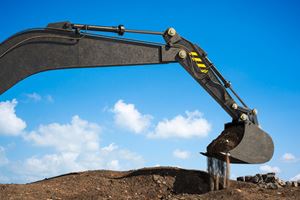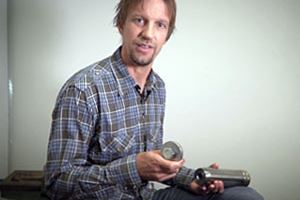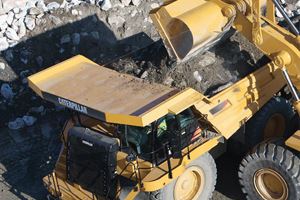What is the difference between a straight pivot pin and the Expander System?
Pivot pins are located on cylinder rod ends and between moving mechanical parts. They provide applications with the flexibility they need to operate efficiently.

Damage-prone straight pins
A straight pin cannot fit into the lugs of a machine unless the lug holes are slightly bigger than the pin itself. This means that there is always a gap between a straight pin and the lugs. Although this gap is necessary to mount the pin in the lugs, it is also problematic as it affects the precision of the machine. Moreover, it allows the axle to hit the lugs with full speed and force when the direction of the machine changes. It is common to forget that flat washers, locking rings and other fasteners do not actually fix the pin in the lugs – they only prevent it from rotating and falling out.
When a machine is exposed to heavy loads and vibration, the pin slowly wears down the lug holes. This leads to the loss of precision and control of the machine and makes it necessary for the lugs to undergo repairs. These usually take place every 3,000 to 5,000 hours, depending on the load intensity on the machine.
The play between the lugs and the pin is not the only reason why straight pins make lugs more prone to damage. When a pin is loaded, all the pressure is forced onto a small area, deforming it permanently. Lugs are also typically made from a softer material than the pin, and easily lose their shape after repeatedly coming into contact with a hard pin.
A simple method to prevent lug wear

An Expander System consists of a pivot pin tapered at both ends, two expansion sleeves, two tension washers, and two fasteners. The pin is installed directly into the existing mounting. Upon tightening the fasteners, the washer presses the slotted expansion sleeve up the tapered ends of the pin. The sleeves then expand, conform to the pattern in the lugs and lock the system in place. Once retorqued, the system locks from both sides.
Days of downtime vs short repairs
Traditional straight pins and the Expander System also have different repair procedures. Welding and line boring are used to repair worn lugs when using straight pins. This not only takes time but also necessitates an experienced mechanic with specialized equipment. Since complex repairs like these are difficult to make in the field, the machine is usually moved to a workshop causing costly and time-consuming downtime. Since the Expander System can be mounted directly into the worn lugs, there is no need for welding and line boring. In many applications, it can actually be installed on-site and operations can resume after a few hours.
The pressure from an Expander System pivot pin is well distributed over the whole contact area in the direction of the force, so the lugs do not become damaged from the pressure. This system permanently prevents lug wear and eliminates the need for repairs.



